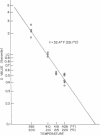Abstract
To determine parameters that would assure sterility of a sealed seam of film for application in “split-seam entry,” spores of Bacillus subtilis var. niger were sprayed onto pieces of Kapton and Teflon film. Short-time, high-temperature (200 to 270 C) exposures were made with film pieces between aluminum blocks in a hot-air oven, and the D and z values were determined after subculture of surviving spores. The use of Kapton film allowed the study of high temperatures, since it is not heat sealable and could be used to make thin packages for heat treatment. Spores on Teflon were dry-heat treated in a package designed to simulate an actual seam to be sealed. The z values of 29.1 C (52.4 F) for spores on Kapton and 139 C (250.4 F) for spores on Teflon were calculated.
Full text
PDF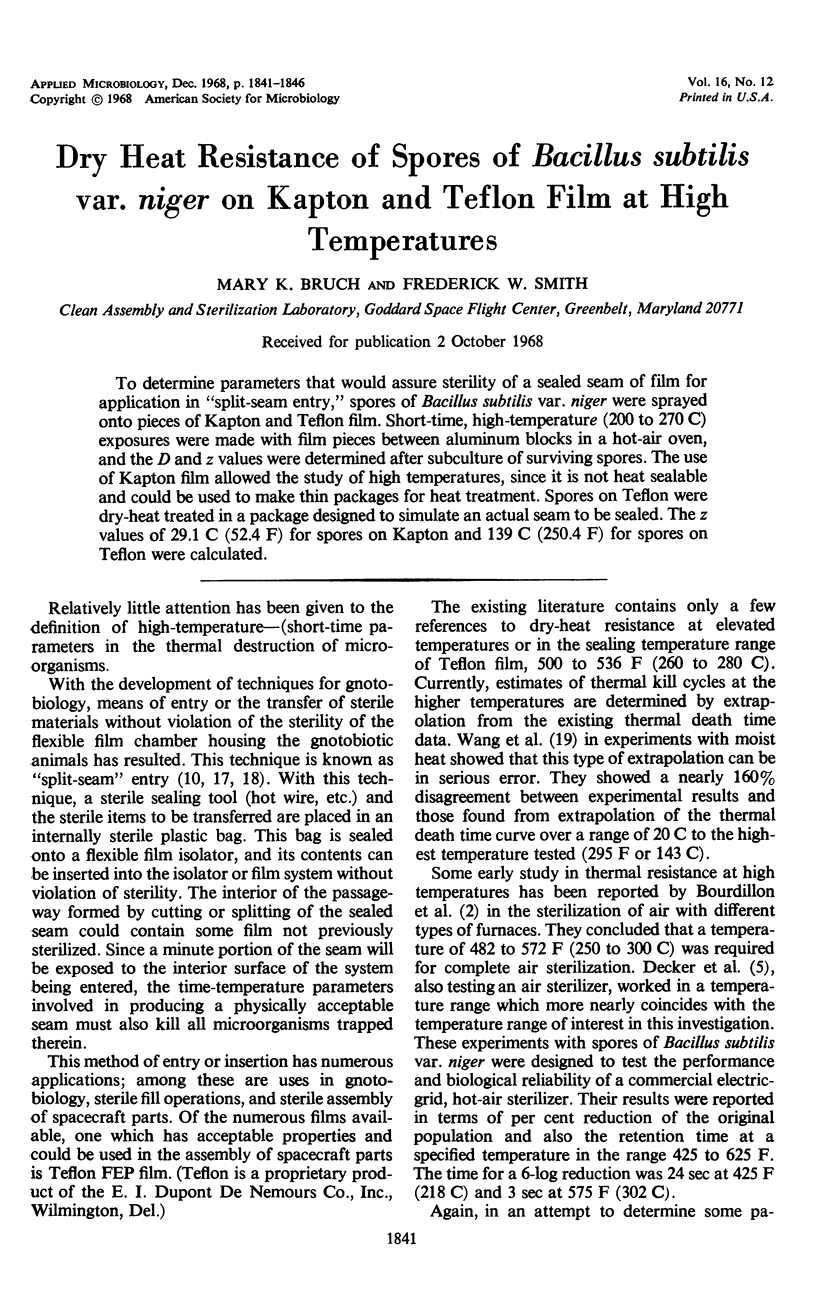
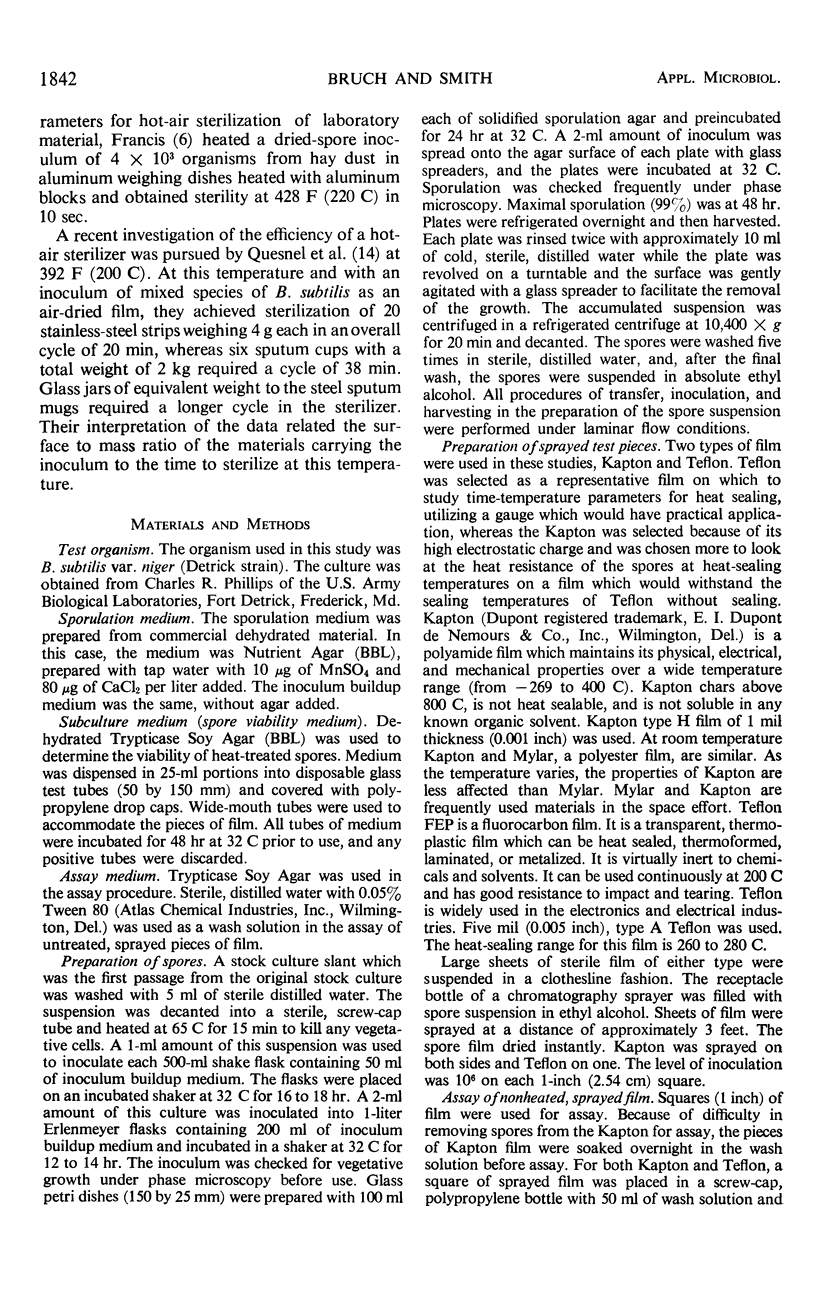
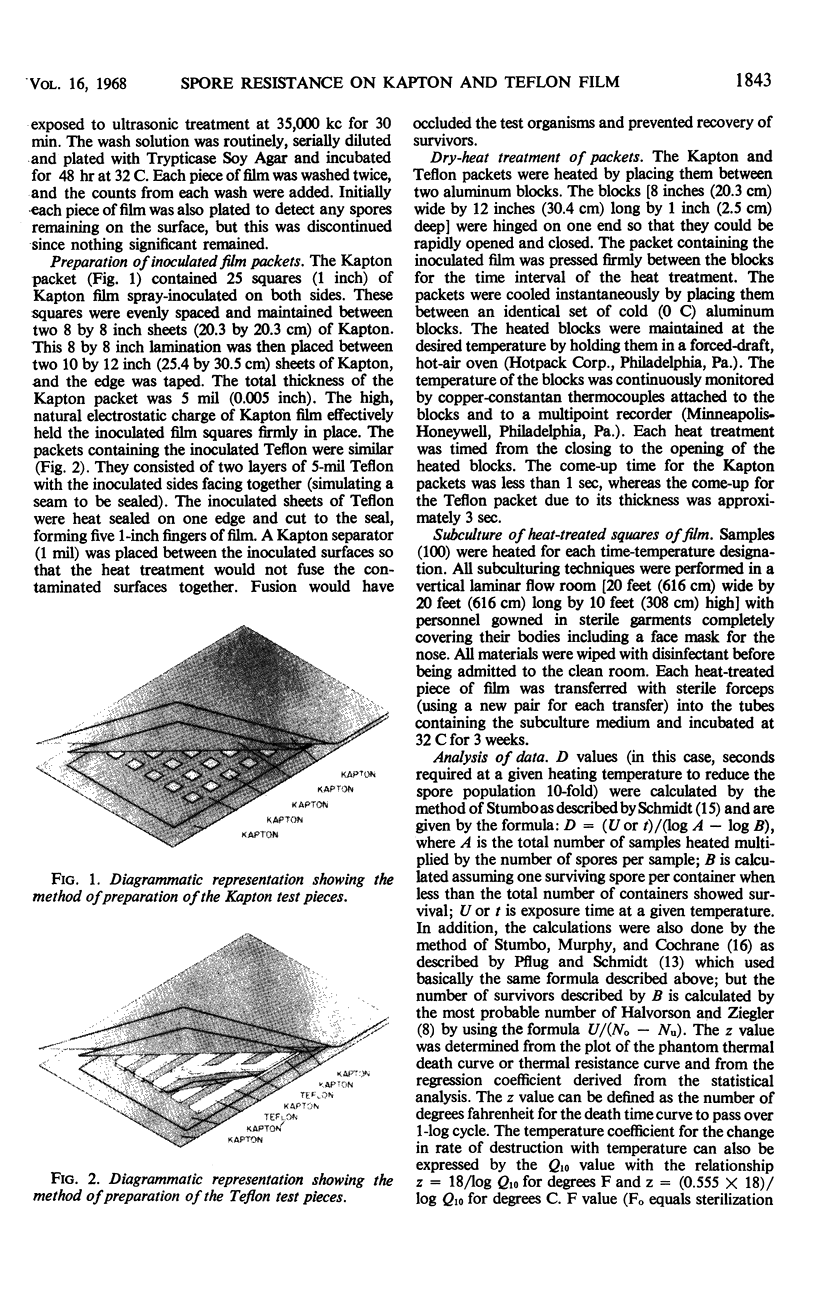
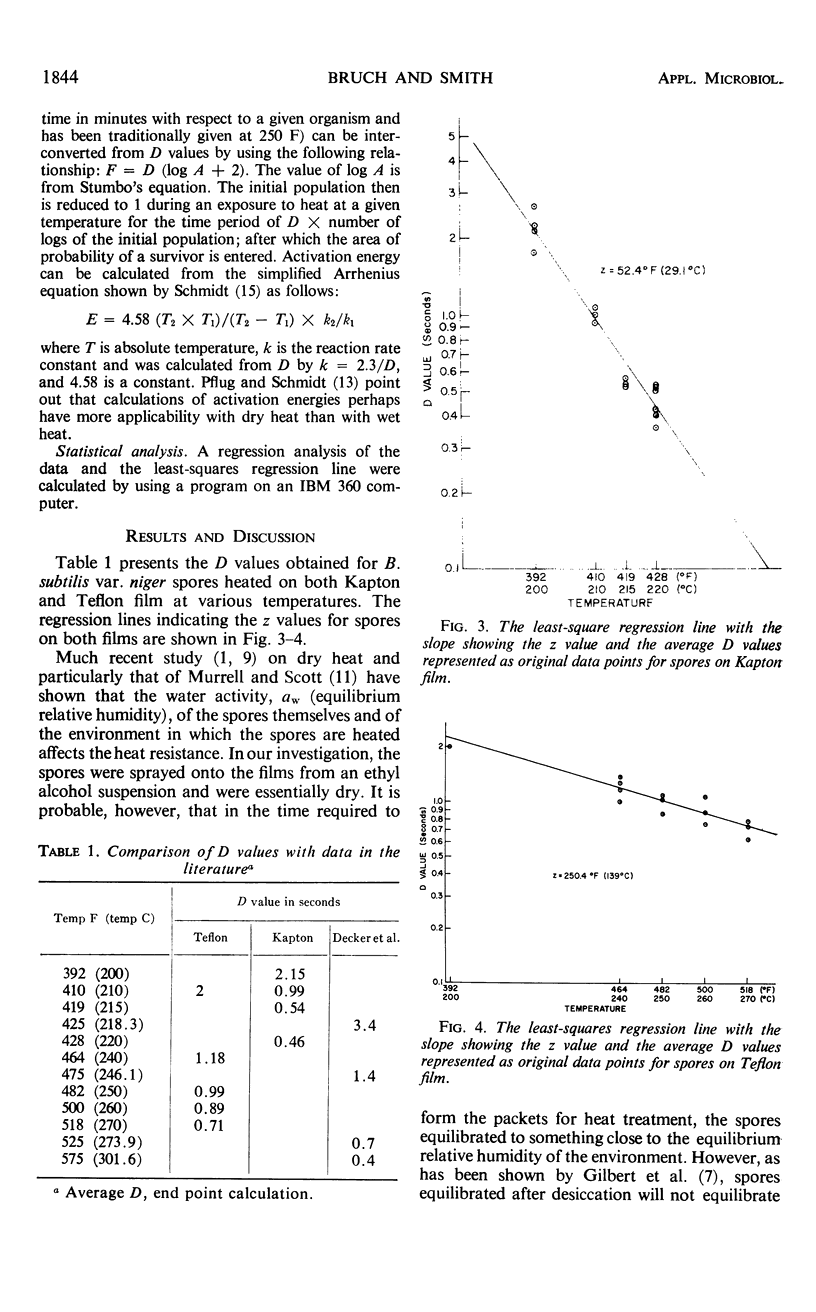
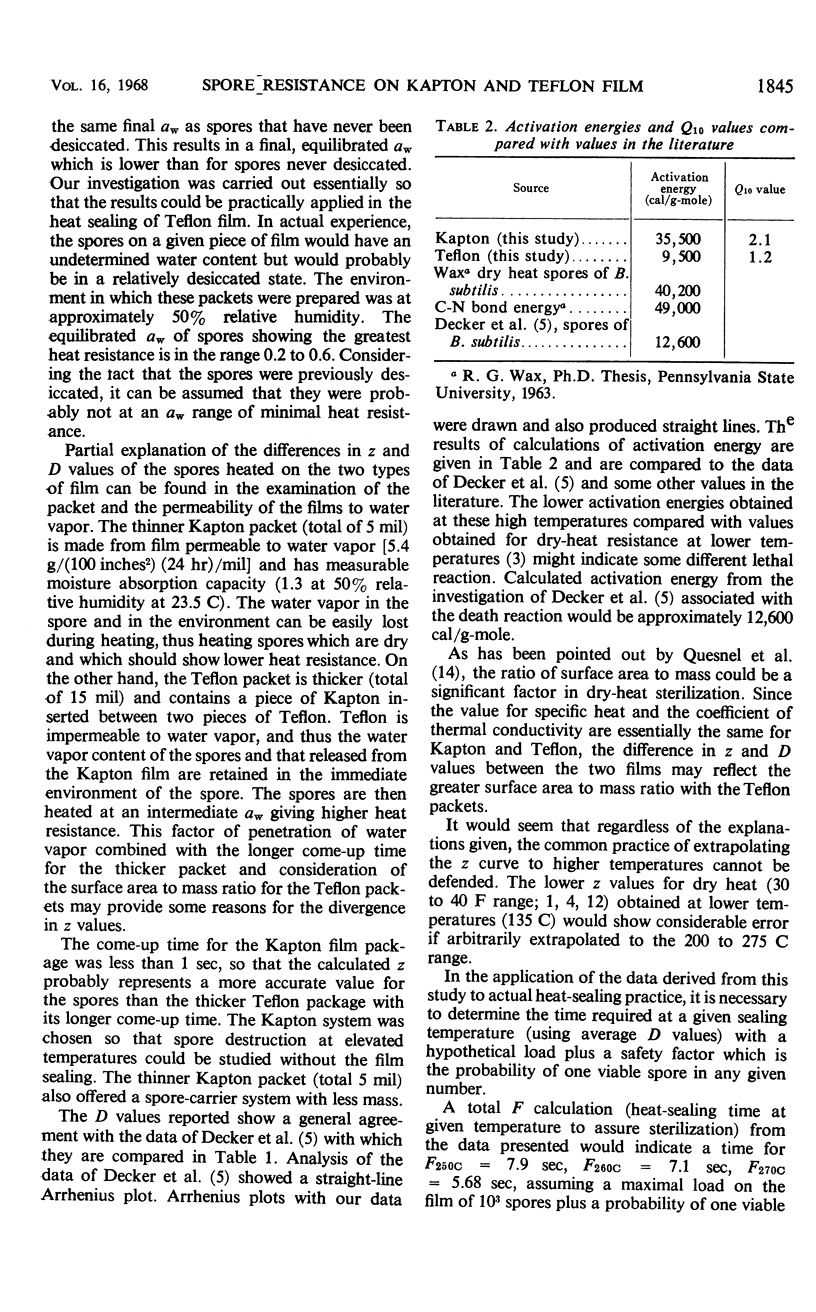
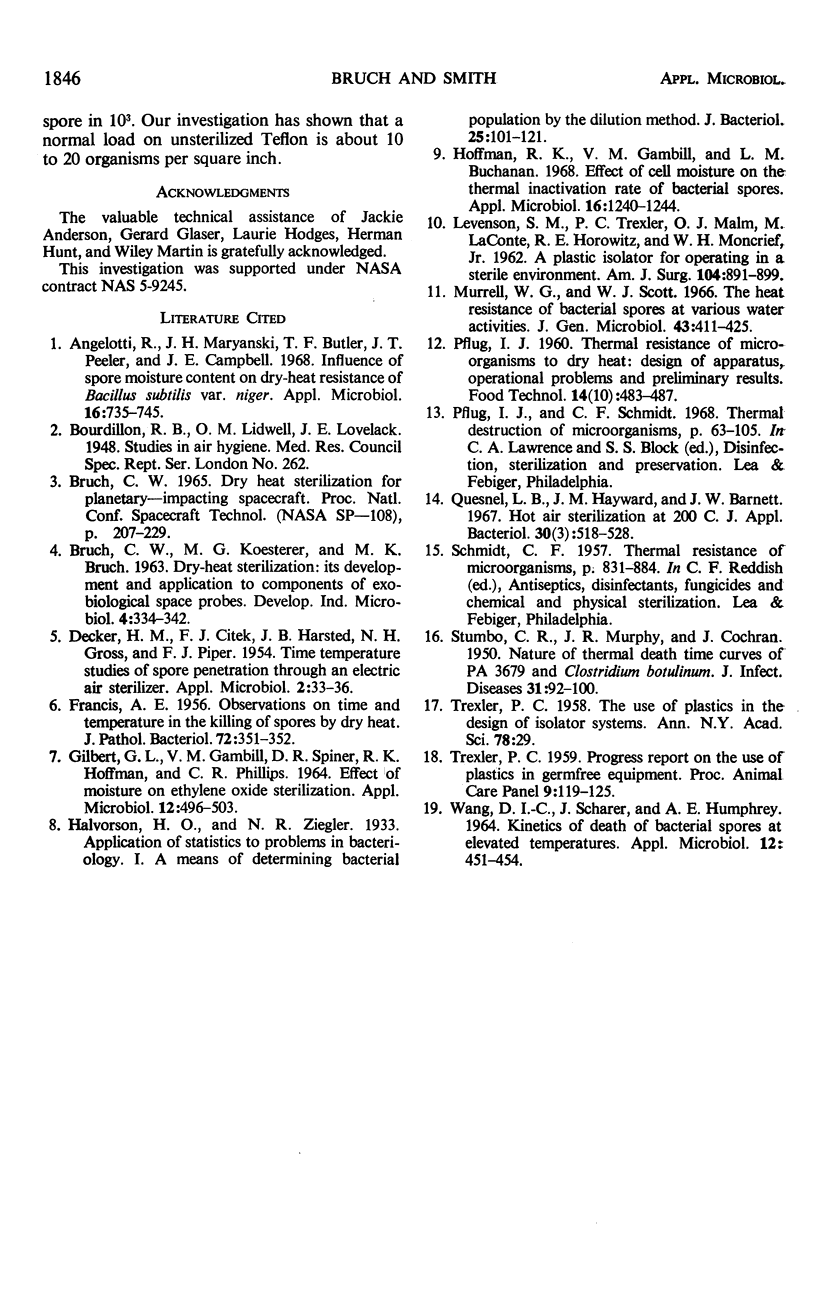
Images in this article
Selected References
These references are in PubMed. This may not be the complete list of references from this article.
- Angelotti R., Maryanski J. H., Butler T. F., Peeler J. T., Campbell J. E. Influence of spore moisture content on the dry-heat resistance of Bacillus subtilis var. niger. Appl Microbiol. 1968 May;16(5):735–745. doi: 10.1128/am.16.5.735-745.1968. [DOI] [PMC free article] [PubMed] [Google Scholar]
- DECKER H. M., CITEK F. J., HARSTAD J. B., GROSS N. H., PIPER F. J. Time temperature studies of spore penetration through an electric air sterilizer. Appl Microbiol. 1954 Jan;2(1):33–36. doi: 10.1128/am.2.1.33-36.1954. [DOI] [PMC free article] [PubMed] [Google Scholar]
- GILBERT G. L., GAMBILL V. M., SPINER D. R., HOFFMAN R. K., PHILLIPS C. R. EFFECT OF MOISTURE ON ETHYLENE OXIDE STERILIZATION. Appl Microbiol. 1964 Nov;12:496–503. doi: 10.1128/am.12.6.496-503.1964. [DOI] [PMC free article] [PubMed] [Google Scholar]
- Halvorson H. O., Ziegler N. R. Application of Statistics to Problems in Bacteriology: I. A Means of Determining Bacterial Population by the Dilution Method. J Bacteriol. 1933 Feb;25(2):101–121. doi: 10.1128/jb.25.2.101-121.1933. [DOI] [PMC free article] [PubMed] [Google Scholar]
- Hoffman R. K., Gambill V. M., Buchanan L. M. Effect of cell moisture on the thermal inactivation rate of bacterial spores. Appl Microbiol. 1968 Aug;16(8):1240–1244. doi: 10.21236/ad0835496. [DOI] [PMC free article] [PubMed] [Google Scholar]
- LEVENSON S. M., TREXLER P. C., MALM O. J., ACONTE M. L., HOROWITZ R. E., MONCRIEF W. H., Jr A plastic isolator for operating in a sterile environment. Am J Surg. 1962 Dec;104:891–899. doi: 10.1016/0002-9610(62)90465-8. [DOI] [PubMed] [Google Scholar]
- Murrell W. G., Scott W. J. The heat resistance of bacterial spores at various water activities. J Gen Microbiol. 1966 Jun;43(3):411–425. doi: 10.1099/00221287-43-3-411. [DOI] [PubMed] [Google Scholar]
- Quesnel L. B., Hayward J. M., Barnett J. W. Hot air sterilization at 200 degrees. J Appl Bacteriol. 1967 Dec;30(3):518–528. doi: 10.1111/j.1365-2672.1967.tb00331.x. [DOI] [PubMed] [Google Scholar]
- TREXLER P. C. The use of plastics in the design of isolator systems. Ann N Y Acad Sci. 1959 May 8;78:29–36. doi: 10.1111/j.1749-6632.1959.tb53093.x. [DOI] [PubMed] [Google Scholar]
- WANG D. I., SCHARER J., HUMPHREY A. E. KINETICS OF DEATH OF BACTERIAL SPORES AT ELEVATED TEMPERATURES. Appl Microbiol. 1964 Sep;12:451–454. doi: 10.1128/am.12.5.451-454.1964. [DOI] [PMC free article] [PubMed] [Google Scholar]





